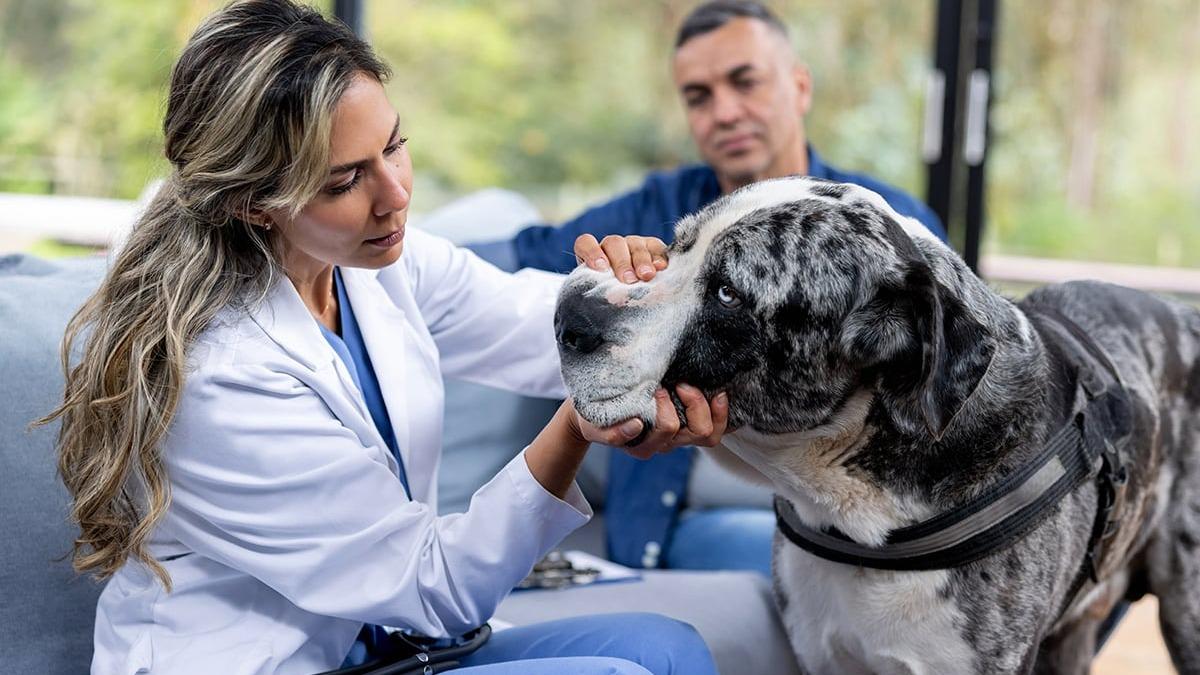Pet insurance has gained popularity among pet owners, offering financial protection and peace of mind during unexpected veterinary expenses for accidents & illnesses. To make informed decisions, understanding deductibles in dog and cat insurance policies is crucial. In this guide, we will explore deductibles, their functionality, and factors to consider when selecting the right deductible for your furry companion with Spot Pet Insurance.
What is a Deductible?
Deductibles within pet insurance refer to the predetermined amount that policyholders must pay before the insurance coverage kicks in. It is an important aspect of pet insurance plans and plays a significant role in managing costs for both the pet owner and the insurance provider. The purpose of deductibles is to share the financial responsibility between the pet owner and the insurance company. By requiring a deductible, insurance companies can offer coverage for a wide range of veterinary expenses while keeping premiums affordable for pet owners. Deductibles help prevent the overutilization of insurance benefits for minor or routine expenses, ensuring that coverage is primarily reserved for significant and unexpected veterinary costs. When a pet owner incurs a veterinary expense, they are responsible for paying the deductible amount first before the insurance coverage applies. For example, if a pet insurance policy has a $200 deductible and the veterinary bill totals $1,500, the pet owner will pay the bill, and the insurance coverage will reimburse the eligible costs, less the $200 deductible. The deductible is typically an annual amount, meaning it resets each policy year. Deductibles may be subject to change at renewal, depending on your pets age and the provider.
Deductibles Serve Several Purposes in Managing Costs
Cost Sharing: By requiring pet owners to contribute to the initial expenses it encourages responsible usage of insurance coverage.
Premium Control: Deductibles help insurance companies manage their risk and keep premiums more affordable. When pet owners take on a portion of the financial responsibility through deductibles, insurance providers can offer coverage at a very helpful price.
Claims Management: Implementing deductibles helps insurance companies streamline claims processing and can help reduce administrative costs.
Long-Term Cost Stability: Deductibles can help stabilize long-term costs for both pet owners and insurance providers. By setting a specific deductible amount, pet owners can better budget for potential veterinary expenses, knowing that they are responsible for a predetermined amount. For insurance providers, deductibles contribute to financial predictability and sustainability in the face of varying claims.
Types of Deductibles in Pet Insurance
Annual Deductible:
An annual deductible in pet insurance is a fixed amount that you must pay before your insurance coverage begins for the policy year. It is a cumulative deductible that applies to all claims made within that year, regardless of the number of incidents or conditions. Once you meet the annual deductible, your insurance will start reimbursing a percentage or fixed amount of eligible expenses according to the terms of your policy.
Per Incident Deductible:
A per-incident deductible in pet insurance is a deductible that applies to each new incident or condition for which you file a claim. Unlike an annual deductible that applies to the entire policy year, a per-incident deductible is specific to individual incidents or conditions.
Lifetime Deductible:
In pet insurance, a lifetime deductible refers to a deductible that applies over the lifetime of your pet's insurance policy. It is a cumulative deductible that accumulates over time and does not reset annually like an annual deductible.
Factors to Consider When Choosing a Deductible
Reimbursement Rates: Different pet insurance providers may offer different reimbursement rates, which may include 70%, 80%, or 90% of the eligible expenses. Higher reimbursement rates typically lead to higher monthly premiums. Other providers may have a fixed reimbursement rate based off the age of your pet at enrollment or renewal.
Breed and Age Factors: Some pet insurance providers may decline pets due to certain breeds or age restrictions because of increased health risks. When selecting the most effective course of action for your personal situation, it could be helpful to understand some of the common health risks associated with your pet’s specific breed to understand possible health conditions that may arise.
Multiple Pet Discounts: If you have multiple pets, Spot plans offer multi-pet discounts on all pets enrolled.
How Deductibles Affect Pet Insurance Premiums
Deductibles can play a significant role in determining pet insurance premiums. Understanding how deductibles affect pet insurance can help pet owners make informed decisions when selecting a policy. Below, we'll detail how deductibles influence pet insurance premiums.
Lower Deductibles and Higher Premiums: Pet insurance policies with a lower deductible usually have higher premiums. This is because a lower deductible means the insurance company will be liable for covering a larger portion of the claim, resulting in increased financial risk for them.
Higher Deductibles and Lower Premiums: Conversely, a policy with a higher deductible will lead to lower premiums. With a higher deductible, the policyholder is responsible for a larger portion of the claim before the insurance coverage kicks in. This reduces the insurer's financial risk, lowering the premium as a result.
Overall Tips for Managing Deductibles in Pet Insurance
Set aside funds for potential deductibles, establishing a dedicated savings account for pet-related expenses. Understand policy limits and exclusions to help ensure you get the most out of your plan. Utilize preventive care coverage and wellness benefits offered by some insurance providers to help maximize the value of your policy beyond deductibles and emergency situations. Regularly review and reassess deductible options as your pet's health evolves or circumstances change. Seek help from Spot directly when registering and customizing your plan!
Conclusion
Understanding deductibles in pet insurance policies is necessary for making informed decisions and managing eligible veterinary expenses. By considering factors such as budget, and pet's characteristics, and evaluating different options, pet owners can choose the coverage level that best suits their needs, helping ensure financial protection and well-being for their beloved companions. For any questions regarding deductibles for your pet insurance plans please contact us at Spot Pet Insurance.

With 10 years of experience as a pet parent, I aim to empower pet owners with insights into pet insurance and maintaining their pet's well-being. I aspire to be a trusted source, combining knowledge with a commitment to the welfare of our beloved pets.

Creative manager by day, pet enthusiast all the time! After 19 years with my dog (hopefully he wins the award for oldest pet in the world), I enjoy spending my days brainstorming tail-wagging content, and sniffing out the latest trends in the pet world.













